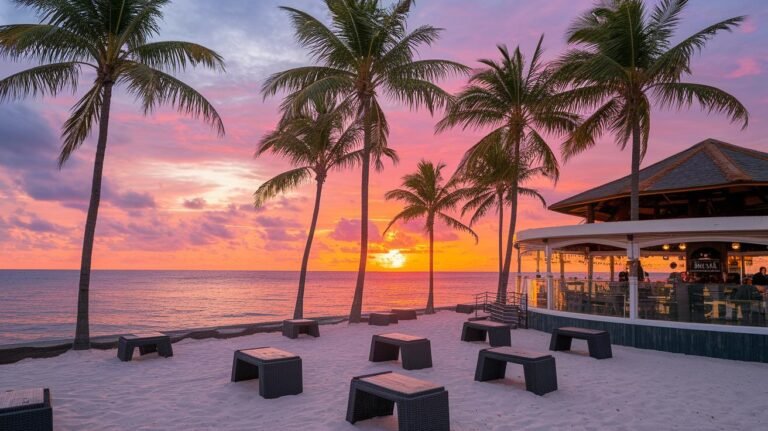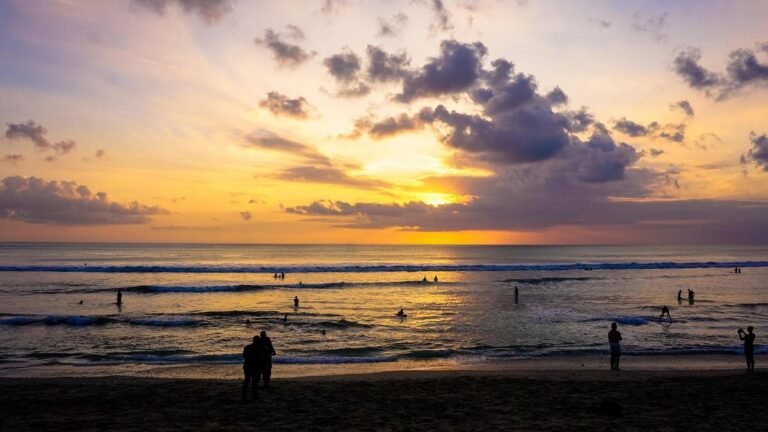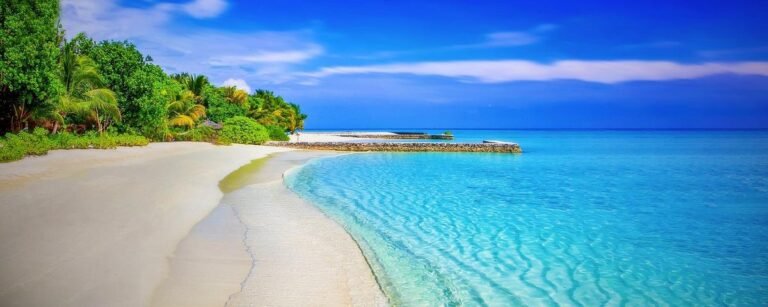Surfers Flock to Bali’s Yeh Gangga Beach for Its Shimmering Black Sands and Powerful Waves
Sudimara Village in Tabanan District, Bali, is home to Yeh Gangga Beach, a coastal destination prized for its dramatic setting. Each day, visitors from nearby areas and further afield arrive to soak in the peaceful surroundings of this shoreline.
The stretch of dark volcanic sand stands out at Yeh Gangga Beach. Sunlight glints off the grains, producing a rare visual effect not seen on many other shores. Rolling swells often draw skilled surfers looking for a challenge. A calm mood pervades the site, set apart from crowded beaches, making it an ideal spot to unwind or simply listen to the steady crash of water on sand.
This beach lies roughly ten kilometers west of Tabanan’s center. Travelers staying in Bongan Village have only a seven to eight kilometer drive. From Bongan Village, a trip typically takes between twelve and sixteen minutes by motorbike or private car. The narrow access road rules out large haul vehicles such as tankers, and two-wheelers and compact cars reach the entrance without difficulty. Local drivers find the route convenient despite the slim width, and no major obstructions slow the commute.
Travelers heading to Yeh Gangga Beach pass through Bongan, Bedha and Sudimara villages, each offering sweeping views of emerald rice paddies. The crisp air carries a hint of ocean salt, making the entire approach feel refreshing. Upon arriving at the parking area, visitors pay a three thousand rupiah fee. The lot accommodates both cars and motorcycles comfortably, providing enough space for dozens of vehicles. Entry gates remain open throughout the day, and staff manage the area from early morning until dusk.
After settling the fee, visitors follow a straight, level road leading directly to the shoreline. On clear days, the surf appears both large and gentle, perfect for shoreline watching. The path has no sharp turns or steep slopes, making it easy for all ages. Sight lines open up just before reaching the sand. When rain moves in, wave heights climb dramatically, prompting beachgoers to stay ashore.
Visitors often pause to snap photos or record videos with friends, stroll between open-air cafes along the shore, or simply rest while listening to waves roll over black sand. Several stalls line the edge of sand. Those who prefer a meal can sample local seafood at beachfront warungs.
A tsunami warning board sits near the entrance. During heavy storms, the power of incoming swells rises sharply, so staff advise visitors to move to higher ground at the first sign of turbulent water. No warning is ever taken lightly. Readings get updated regularly throughout the day.
Photographers identify several vantage points along the shore. The main area just beyond the parking zone draws the most attention, as photographers frame shots of rolling waves and set up short video clips for social platforms. It makes for vivid afternoon stories. Gatherings of family groups often occur here around five pm, when sunlight hits water droplets.
A second highlight lies further along the stretch, where a towering turtle sculpture marks a conservation zone. Guests may pose beside the figure but must not climb it to avoid causing wear or damage.
That site serves as a protected nursery for egg-laying turtles. Workers collect nests and transfer them into shaded enclosures until hatchlings emerge. When the young reach about six months, rangers release them into the open sea. This process safeguards eggs from being trampled by beach traffic and helps increase survival rates. Adult turtles returning to nest stay under observation before going back to open waters. Volunteers assist researchers, and visitors observe operations from a safe distance. Signs explain each stage of the breeding cycle for those curious.
After sunset, food stalls line the sandy edge, serving local dishes until around 9 pm. Nearby open-air karaoke spots offer evening entertainment, drawing small crowds for song sessions that wrap up before late night hours. Many families choose to share a meal under simple tents, enjoying fried fish, rice and fresh juices as the tide rolls in.
Local beliefs hang over certain areas of the shore. Swimming too close to the waterline, relieving oneself indiscriminately or wandering into temple grounds without permission are strictly forbidden. Warning signs illustrate each taboo. Elders say that disrespect can lead to sudden storms or accidents.
Yeh Gangga Beach sits under the watch of the Queen of the South Sea, a spirit goddess in local lore. Stories persist of visitors swept out to swim too close and never returning, or cases of strong currents dragging swimmers under just hours after a taboo breach.
Rituals After Ngaben Ceremony (Source: Private Collection)
This beach hosts sacred rituals tied to the Ngaben cremation rite, where family members launch the ashes of the deceased to the sea in order to guide the spirit back to its origin. Multiple shrines dot the shore, including Pura Dalem Desa Pakraman Yeh Gangga. A rope barrier now marks off the temple grounds, discouraging casual visitors from entering the holy space without guidance. Local priests oversee each ceremony, ensuring offerings and chants follow community tradition.
Yeh Gangga Beach remains a quiet retreat for those seeking coastal calm or cultural insight. Visitors are urged to keep the area clean, respect wildlife protection zones and honor local customs at all times. Many return year after year to witness low-key traditions and the gentle rhythm of emerging hatchlings.







